The ornate pushkarani or step well near the Mahanavami dibba is one of the most beautiful structures in the ruined city of Hampi.
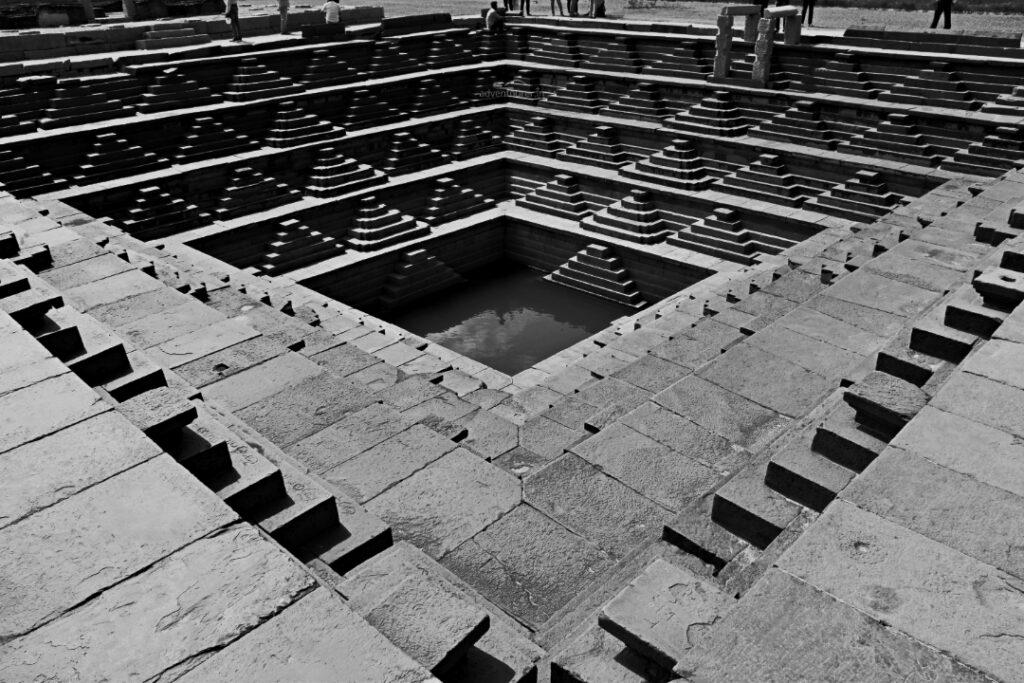
Pushkarani is attached to temples. There are some water tanks that are not related to the temples and few large water tanks were created for the use of the general public and royal families. This step well in the royal enclosure was specially built for the members of the royal family of the Vijayanagara empire.
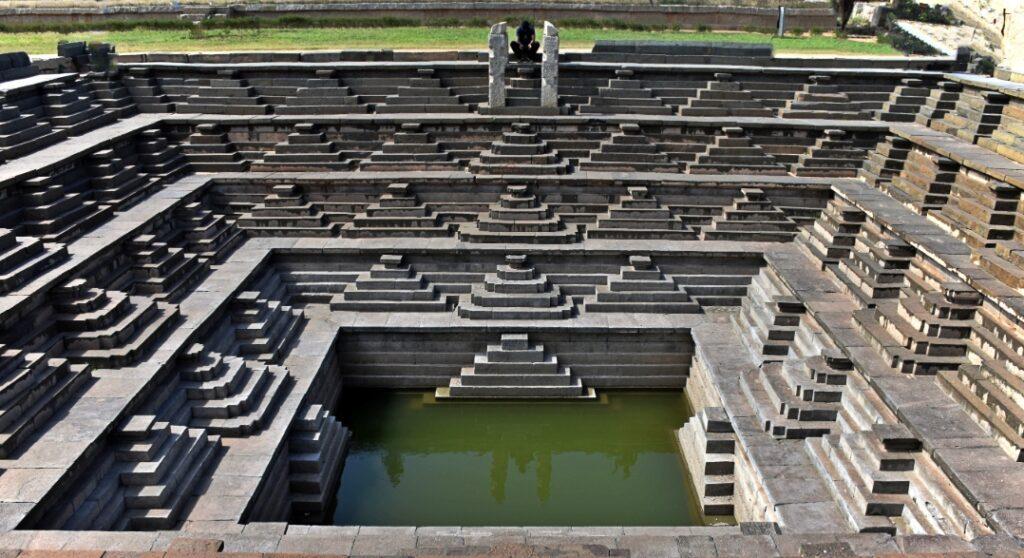
The key attraction of the tank is the most intricate and highly symmetric layout of the steps made in gray stone. It is a five tiered tank where each tier comprises of five steps in a criss-cross pattern. The tank is around 22 sq. meters and about 7 meters deep.
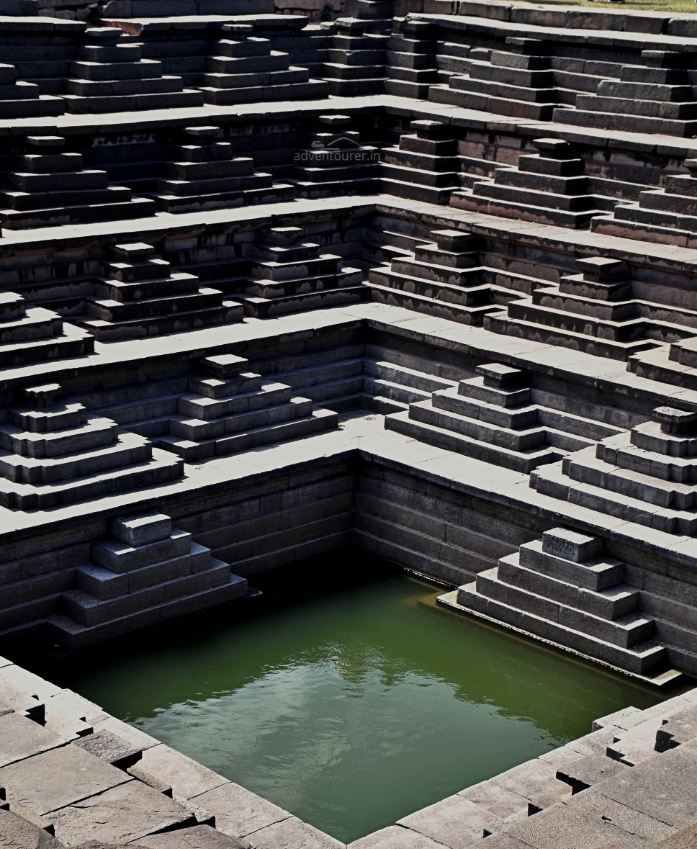
This tank is constructed using finely finished blocks of black schist stones. All the steps or stones bears some sketches and marks made by the architects. The mason marks on the tank and individual blocks indicate the direction of flow of water.

At each tier, the symmetry of the pyramidal-shaped steps makes the structure unique and elegant. Another unique feature of this tank is the technique of its construction. Each stone used for the construction has numerals, symbols, and Kannada letters on it. For example Kannada letters, u, da, tu, and pa represent north (uttara), south (dakshina), east (turpu), and west (paschima) directions.
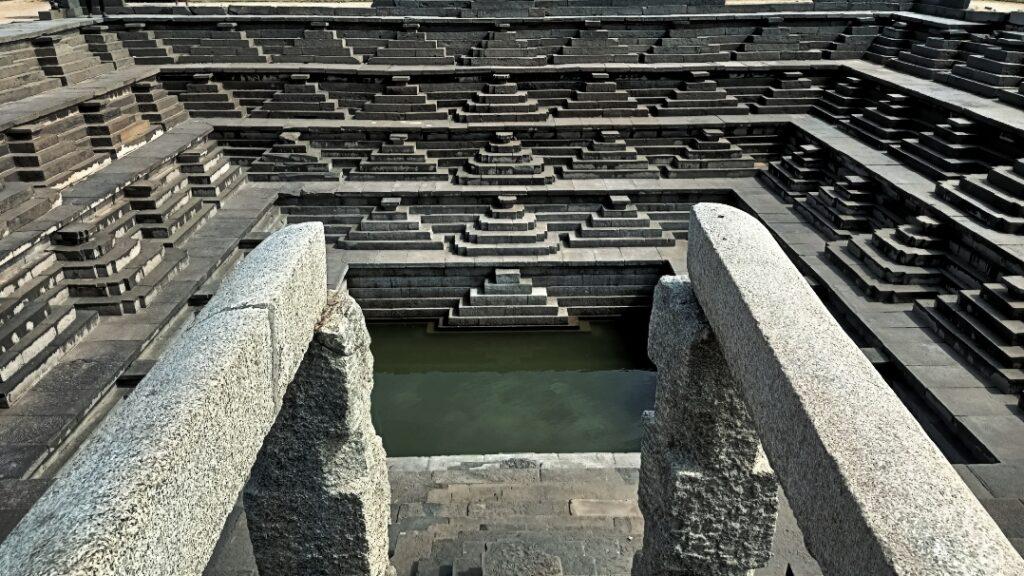
The aqueduct or water channel supplying this step well is an engineering wonder from the Vijayanagara era. The water is brought from the mighty Tungabhadra river, which is minimum 3 km away, through a chain of aqueduct made of stone. The water was fed to the well with a simple mechanism involving only gravity! These water supply and storage systems indicate the knowledge of geology, soil engineering, construction engineering, and structural engineering in ancient times.
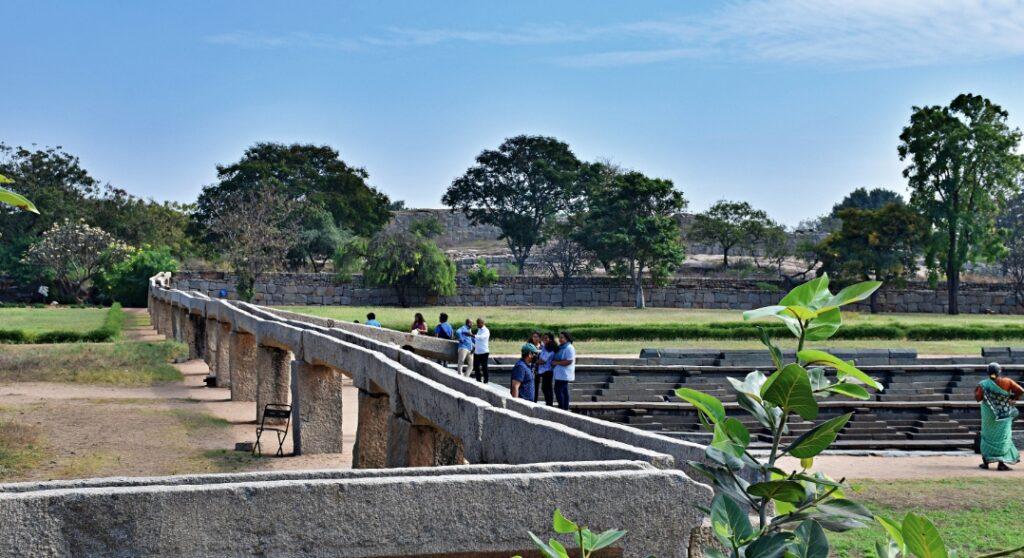
The Vijayanagara empire built an extensive water infrastructure, some examples of which predates the Vijayanagara. The Manmatha tank near Virupaksha temple is dated to about the 9th century. According to an inscription found there, the Manmatha tank was upgraded and a Durga shrine added in the year 1199.
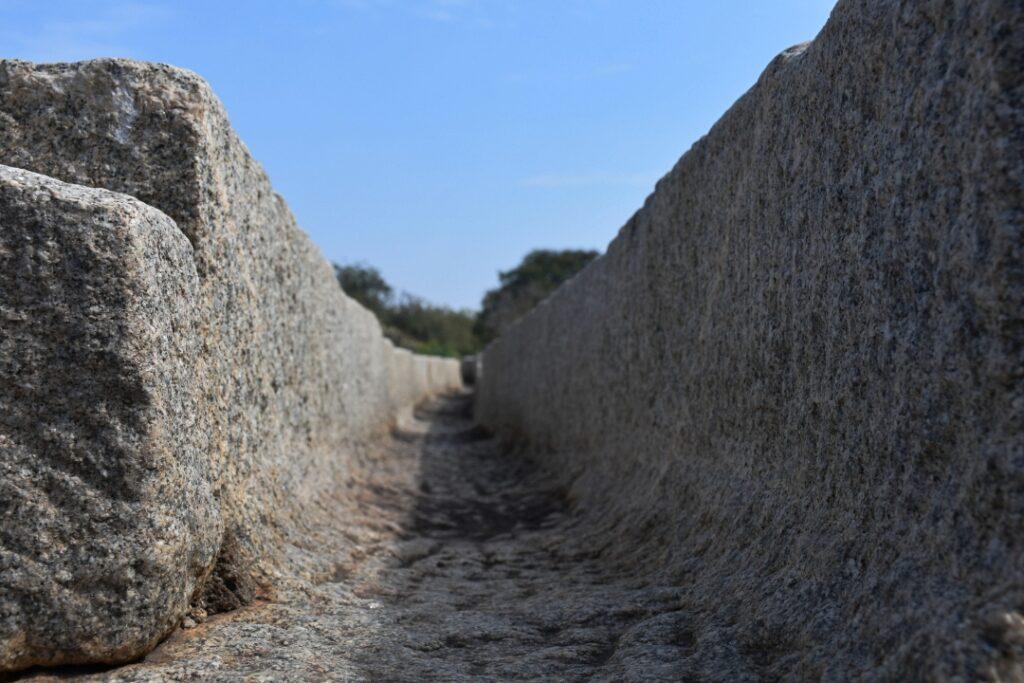
The Hampi monuments include aqueducts to carry water to tanks and other parts of the city, as well as drains and channels to remove water overflow. For example, excavations near the Mahanavami dibba revealed a large, square, stepped tank (well) that was fed by an aqueduct.

The tanks were public utilities. Some were used for royal ceremonies. There are 23 wells and cisterns in the Hampi. Of these, 13 were found outside the city walls in the suburbs, and ten inside. The water infrastructure in Hampi was for the use of travelers, rituals, domestic use, and for irrigation.

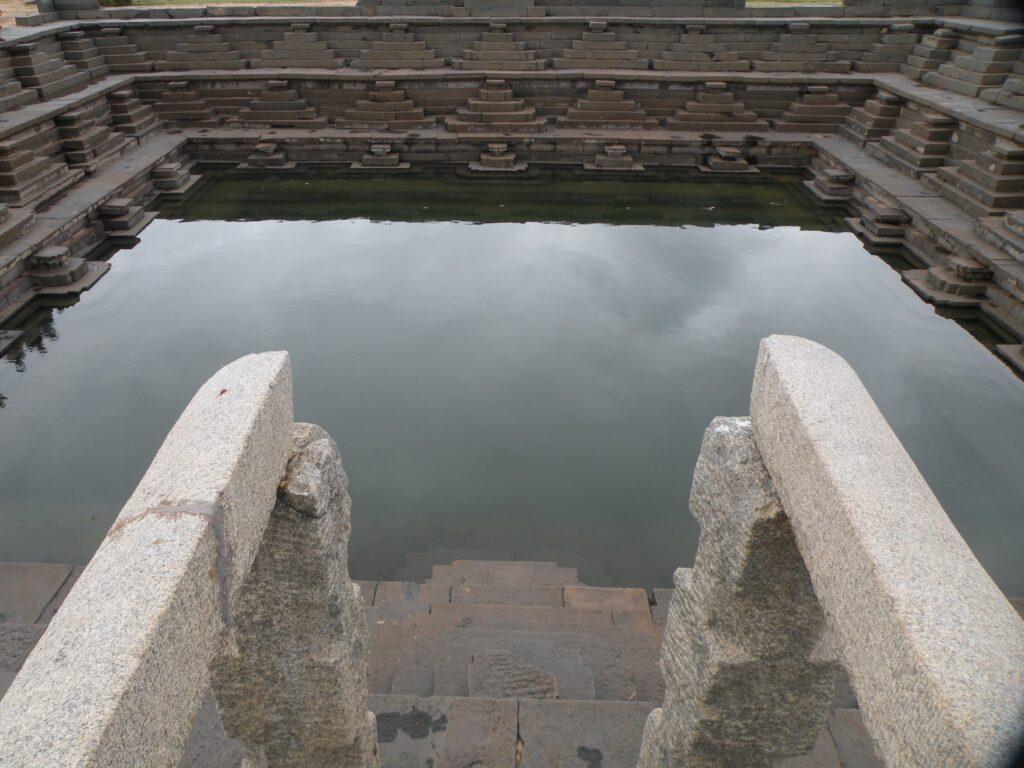
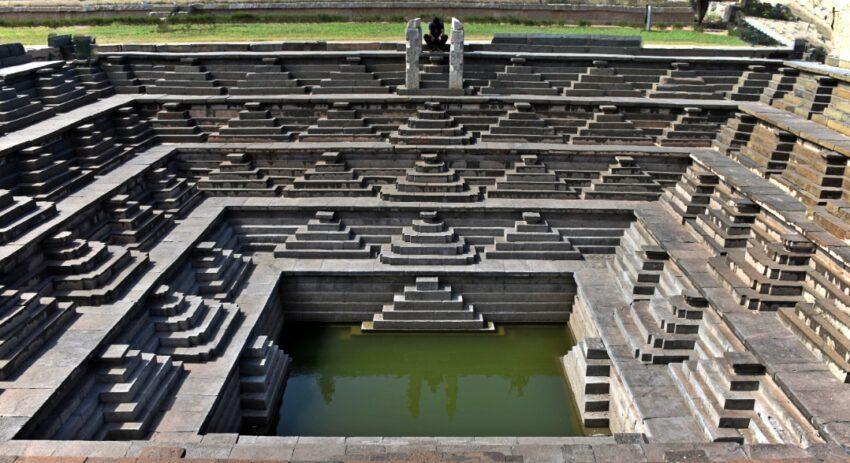
1 thought on “Hampi Step well/Pushkarani”